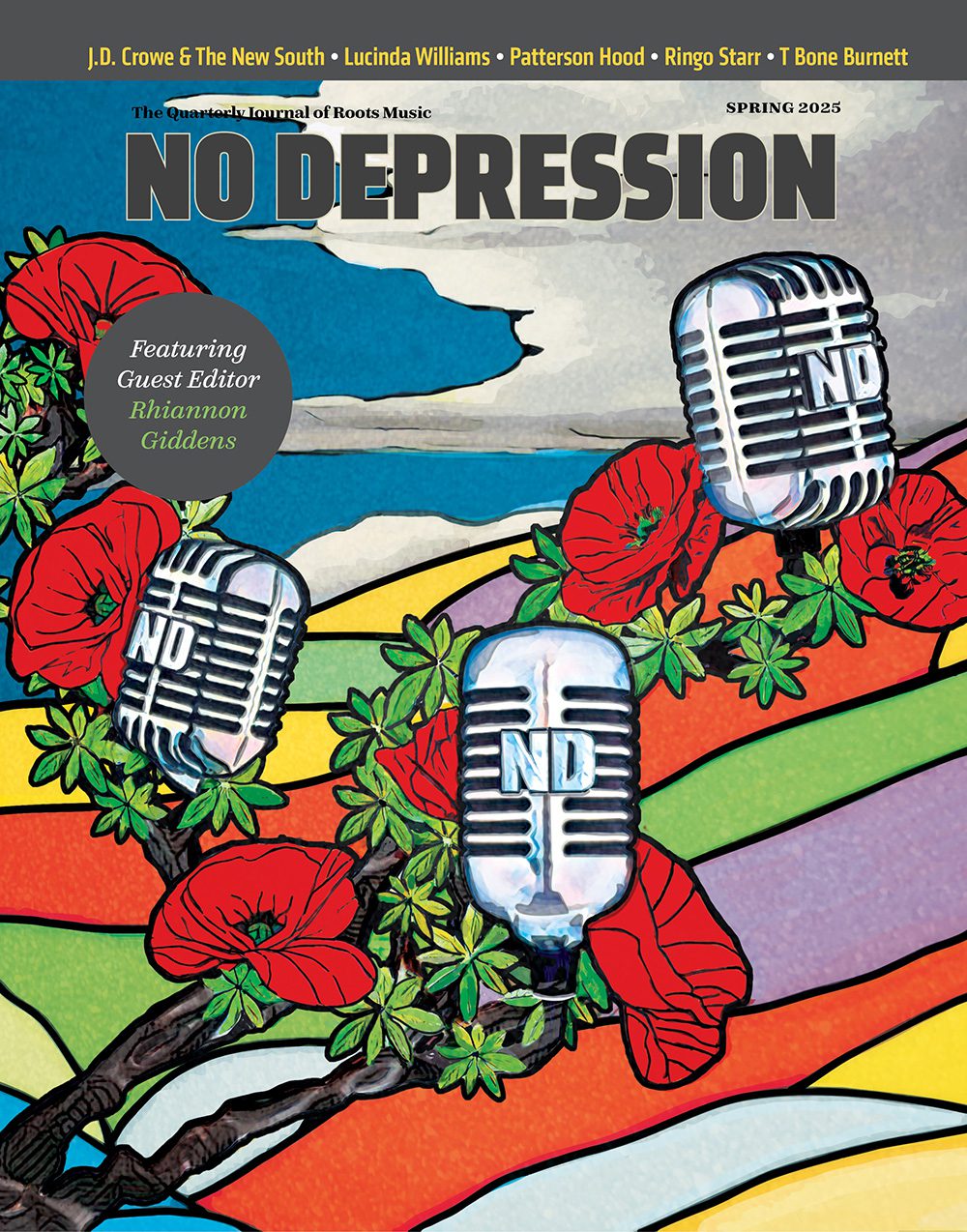Grey DeLisle – A remembrance of things past
While missing her fiance, she went on a songwriting jag and called him up to sing the songs over the phone. “It sounds real girly to say this, but I’d write as many songs as I could so I’d have an excuse to call him. But the songs just kept coming, and they came really fast,” she says. “I don’t really have great stories to go along with a story’s creation. I believe that there are all these little songs just swirling around in the air and they just come to you.”
Their relationship formed the theme of the album and is even reflected in its title. The Graceful Ghost is the name of a small steamboat in Texas that Hammond rented to take DeLisle out onto Cattle Lake, where he proposed to her. “He knew how much I loved John Hartford and steamboats,” she says.
The title also refers to photographs taken in the late 19th century, the period she wanted to conjure up on the album. “I had this book of photographs by Julia Margaret Cameron,” DeLisle explains. “She photographed women in the late 1800s, and back then, taking a picture took a long time. These women would move just the tiniest bit, creating all these little ghosts in the pictures, especially in their eyes.” DeLisle kept the book open on a table while making the album, which was recorded in the living room of the home she shares with Hammond in Los Angeles.
The album jacket’s photographs were all taken with equipment from the period, and many songs were recorded with vintage gear. “No computers will ever be harmed in the making of a Grey DeLisle album,” she quips. A self-proclaimed “analog snob,” she equates Pro Tools to “other forms of horribleness.” DeLisle feels that instruments such as the pedal harmonium from the 1800s used on “Katy Allen” support a vibe she was trying to create.
On the lovely “Tell Me True”, DeLisle wanted to incorporate a spoken excerpt from a Civil War letter, and found it in a very modern way: on the internet. However, she reads the poetic lines of the letter into a Rek-o-Cut recorder from the 1940s. “Using authentic equipment is just like having candles around while we’re recording,” she contends. “I believe these things create a vibe, and you can feel those candles and that equipment when you listen to the album. Some things are felt even when they’re not heard. It creates a warmth and closeness that I can’t really describe.”
Having grown up singing on front porches, DeLisle wanted the listener to feel as if they were eavesdropping on that kind of setting. “I’m not classically trained, that’s for sure,” she says. “And Marvin [Etizoni, who produced and plays mandolin, guitar, and other instruments on the album] learned how to play the guitar on his own front porch. We’re playing out of a sheer love for music, and I think that comes through on the album. It’s very pure. John Hartford said that style is based on limitations, and that’s definitely true for me. I’m not a virtuoso, but I truly love music, and love making music.”
Capturing the warmth of the music was made easier by keeping the cast small. Only four people play on the album: DeLisle, Hammond, Etizoni, and standup bassist Sheldon Gomberg, who has also played with Ryan Adams and Five For Fighting. Etzioni, a founding member of influential 1980s roots-rock band Lone Justice, has produced all of DeLisle’s albums, as well as records by Counting Crows, Toad The Wet Sprocket and others. “He understands a reference easily and has a wide palette of musical knowledge,” DeLisle says of Etzioni, adding that she never considered using a different producer. “If you’re making good things together, why move on?”
Alongside the themes of her courtship with Hammond and meditations on the past, DeLisle also sees The Graceful Ghost as a tribute to artists she loves — particularly Johnny and June Carter Cash, to whom the album is dedicated. “I felt scared to dedicate it to them. I thought, ‘Is that presumptuous of me?'” she admits. “But in the end, I figured that was what was in my heart, so I’d just do it.”
DeLisle says that the two legends’ spirits informed the writing and recording of the album, and she thought that it was suitable since she sees the album as a reflection of her relationship with Hammond. “I always respected June and Johnny’s bond and marriage so much, like most people do.”
But she’s been informed and inspired by the Carters and Cash most of her life. She admired June’s ability to excel in music, acting and comedy. “I always wanted to act and sing and paint and do all these things, and people would say, ‘Pick one thing and stick to that,’ but I thought to myself that June Carter never had to do that,” DeLisle says. “She inspired me to follow all the dreams I had been given.”
Sara and June Carter were two important figures in her decision to take up the autoharp, though she adds it was also because she found other instruments too frustrating and that she needed “something to bang out my songs on.” Besides, she says, “the autoharp has such a beautiful, angelic tone to it. I love the way it sounds.” When PBS was doing research on a Carter Family project, the filmmakers discovered DeLisle and invited her to be a part of the documentary, which is currently in production.
DeLisle doesn’t entertain any notion of becoming a superstar, but she does want her music to be heard. She turns pensive when considering all that she has going on: the voiceovers, her painting, her singing. “I think you can follow all your dreams, use all the talents the Lord blesses you with.”
DeLisle might want to be careful with what she dreams, since that Wanda Jackson one recently came very much to life. When Jackson heard about DeLisle’s dream of the unsignable plastic guitar, she couldn’t resist. During their Hollywood show, Jackson presented DeLisle with a small pink plastic guitar that was signed, “Grey — Dreams Do Come True! Love, Wanda Jackson.”
DeLisle can barely contain her joy, laughing through her words: “I could’ve died with a smile on my face,” she says.
ND contributing editor Silas House was raised Pentecostal and is the author of three novels. His latest, The Coal Tattoo, will be released in fall 2004 and features a character whose favorite singer is Wanda Jackson.




